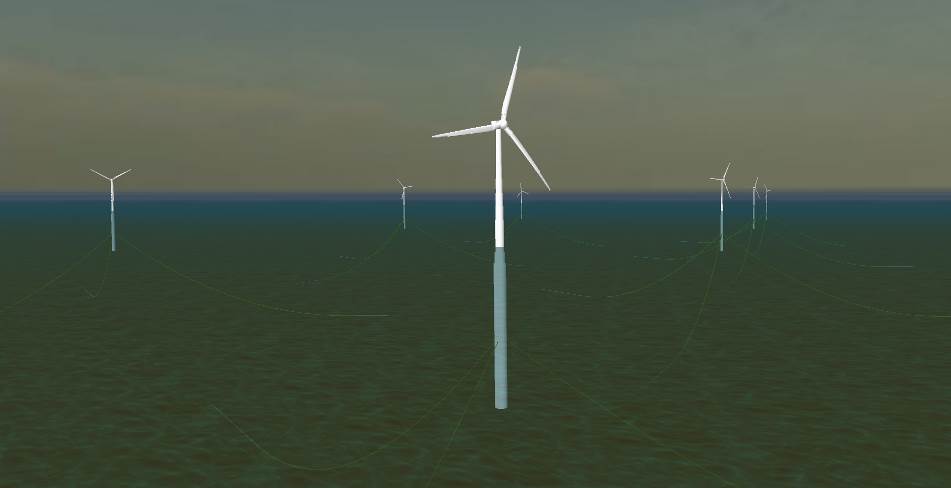

This saves various design iterations that are normally needed in the FOWT design process. With a first implementation in the application and simulation of critical load cases the pre-design is adjusted. To outline the benefits, two example use cases: Use case 1: Streamlined, single-path design process of floating wind turbines: integrated optimization (Systems Engineering).capability to extract linear models for further modal analysis, harmonic response analysis to wind and waves and controller design.adaptivity to any design of floating wind turbine.high computational efficiency (1000 seconds of simulation time in 1 second real time on a standard computer).The main capabilities of the application: at critical interfaces between wind turbine and floating substructure. With high efficiency coupled system analysis are performed which allows to calculate structural loads e.g. It further supports developer to review and assess the KPI of their project with limited information from the wind turbine OEM and the platform designer. The new development address the rising need of floating wind industry to make design decisions at an early project stage.

Reducing the Risk in Floating Wind Projects This new implementation is highly computationally efficient, provides model analysis functionalities and supports the decision making process. Sowento has advanced its in-house modeling tool for floating wind turbines into a standalone application with a computational efficiency of 1000 times real time. Proper modeling of floating wind turbines is highly complex and covers multiple disciplines! This complexity makes design decisions a challenging process. These models are computationally demanding and the design engineer cannot easily run quick sensitivity analyses, or even optimizations.Īltogether, the complexity makes design decisions a challenging process which ask for simplification and new approaches to answer the challenges of the industry. Currently, there are multiple nonlinear 3D design tool available that can run coupled analysis of floating wind turbines, e.g. The design process is not streamlined but highly iterative and usually time-consuming. However, proper modeling of floating wind turbines is highly complex and covers multiple disciplines. This is the author accepted manuscript.Floating wind turbines imply a rise of new challenges in design and development and crucial decisions have to be made even at an early stage of project development. Impact of Simulation Duration Analysis for Offshore Floating Wind Turbines Using a Coupled FAST-OrcaFlex Model Under indefinite embargo due to publisher policy OMAE: 38th International Conference on Ocean, Offshore and Arctic Engineering, 9-14 June 2019, Glasgow, Scotland, UKĪmerican Society of Mechanical Engineers (ASME) Models and optimization frameworks for floating offshore windĪpplications and can be used to aid the development of guidanceĪnd standards for coupled floating offshore wind turbine models.Įngineering and Physical Sciences Research Council (EPSRC)Įuropean Regional Development Fund (ERDF) The results inform the selection of simulation durations to be used in coupled aero-hydro Sweep, the paper establishes the impact of the simulation duration for this particular floating offshore wind turbine and characterizes the convergence properties of the loads and excursions asĪ function of the simulation duration. Wind speeds, sea states, and simulation durations. ConsideringĪn OC4 semi-submersible deployed with the NREL 5 MW turbine, the case study performs a parametric sweep over a range of The estimated fatigue and extreme loads experienced by a floating offshore wind turbine and its mooring system. The work analyses both operational and extreme cases, assessing This paper uses a coupled FAST-OrcaFlex model in order toĮxplore the impact of simulation duration on model convergence.


 0 kommentar(er)
0 kommentar(er)
